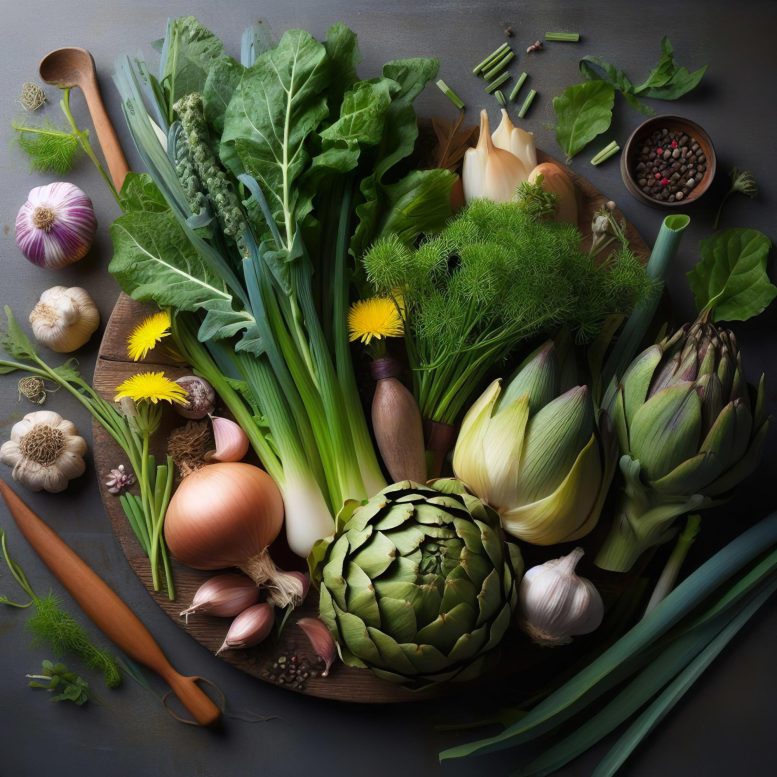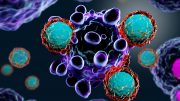
Growing evidence suggests that consuming prebiotics, types of fiber that stimulate gut bacteria, can promote a healthy gut microbiome. A study highlighted foods like dandelion greens, Jerusalem artichokes, garlic, leeks, and onions as particularly high in prebiotic content and essential for microbiome wellness and fiber intake.
Consuming more of these foods could improve your gut health.
Increasing research suggests that intake of prebiotics, specific kinds of fiber typically present in plants that promote good gut bacteria, contributes to a balanced gut microbiome. In a recent study, researchers assessed the prebiotic levels in numerous food varieties by referencing existing studies to determine which foods offer the highest prebiotic content.
Top Prebiotic-Rich Foods Identified
According to the study, foods that pack the greatest prebiotic punch are dandelion greens, Jerusalem artichokes, garlic, leeks, and onions. In addition to supporting gut microbes, prebiotic-rich foods contain high amounts of fiber — something most Americans do not get enough of.

Researcher Cassandra Boyd holding garlic and onion, two foods that the study revealed to be dense in prebiotics. Credit: Cassandra Boyd
“Eating prebiotic-dense foods has been indicated by previous research to benefit health,” said Cassandra Boyd, a master’s student at San José State University who conducted the research with Assistant Professor John Gieng, Ph.D. “Eating in a way to promote microbiome wellness while eating more fiber may be more attainable and accessible than you think.”
Boyd recently presented the findings at NUTRITION 2023, the flagship annual meeting of the American Society for Nutrition held July 22–25 in Boston.
Prebiotics vs. Probiotics
Prebiotics, which can be thought of as food for the microbiome, are different from probiotics, which contain live microorganisms. Both can potentially benefit microbiome health, but they work in different ways.
Studies have linked higher prebiotic intake with improved blood glucose regulation, better absorption of minerals like calcium, and markers of improved digestive and immune function. Although most dietary guidelines do not currently specify a recommended daily allowance for prebiotics, the International Scientific Association for Probiotics and Prebiotics — a non-profit scientific organization that established the currently held definition of prebiotics — recommends an intake of 5 grams per day.
Detailed Findings of the Study
For the study, researchers used previously published scientific findings to analyze the prebiotic content of 8,690 foods contained in the Food and Nutrient Database for Dietary Studies, a resource many scientists use to study nutrition and health.
About 37% of the foods in the database were found to contain prebiotics. Dandelion greens, Jerusalem artichoke, garlic, leeks, and onions had the greatest amounts, ranging from about 100-240 milligrams of prebiotics per gram of food (mg/g). Other prebiotic-rich foods included onion rings, creamed onions, cowpeas, asparagus, and Kellogg’s All-Bran cereal, each containing around 50-60 mg/g.
“The findings from our preliminary literature review suggest that onions and related foods contain multiple forms of prebiotics, leading to a larger total prebiotic content,” said Boyd. “Multiple forms of onions and related foods appear in a variety of dishes as both flavoring and main ingredients. These foods are commonly consumed by Americans and thus would be a feasible target for people to increase their prebiotic consumption.”
Based on the team’s findings, Boyd said a person would need to consume approximately half of a small (4-ounce) onion to get 5 grams of prebiotics.
Wheat-containing items rank lower on the list. Foods with little or no prebiotic content include dairy products, eggs, oils, and meats.
The researchers hope the study will provide a basis to help other scientists assess the health impacts of prebiotics and inform future dietary guidelines. They noted that more research is needed to understand how cooking impacts prebiotic content and to better assess foods that contain multiple ingredients.
Reference: “Determination of the Prebiotic Content of Foods in the 2015-2016 Food and Nutrient Database for Dietary Studies (FNDDS)” by Cassandra Boyd and John Gieng, 22 July 2023, NUTRITION 2023.
Abstract









Be the first to comment on "The 5 Top Foods Rich in Prebiotics, According to Scientists"